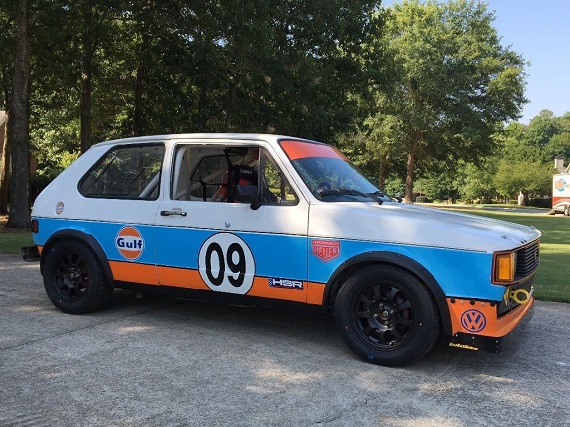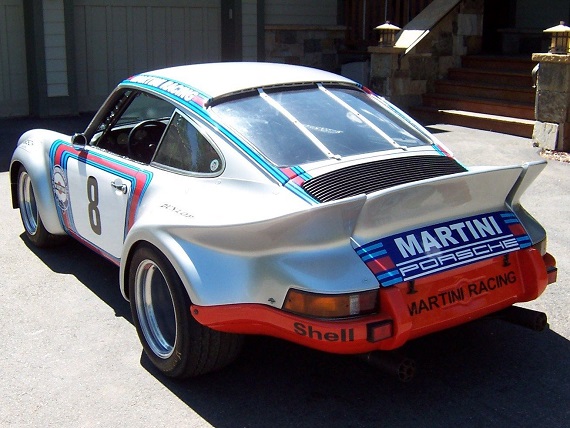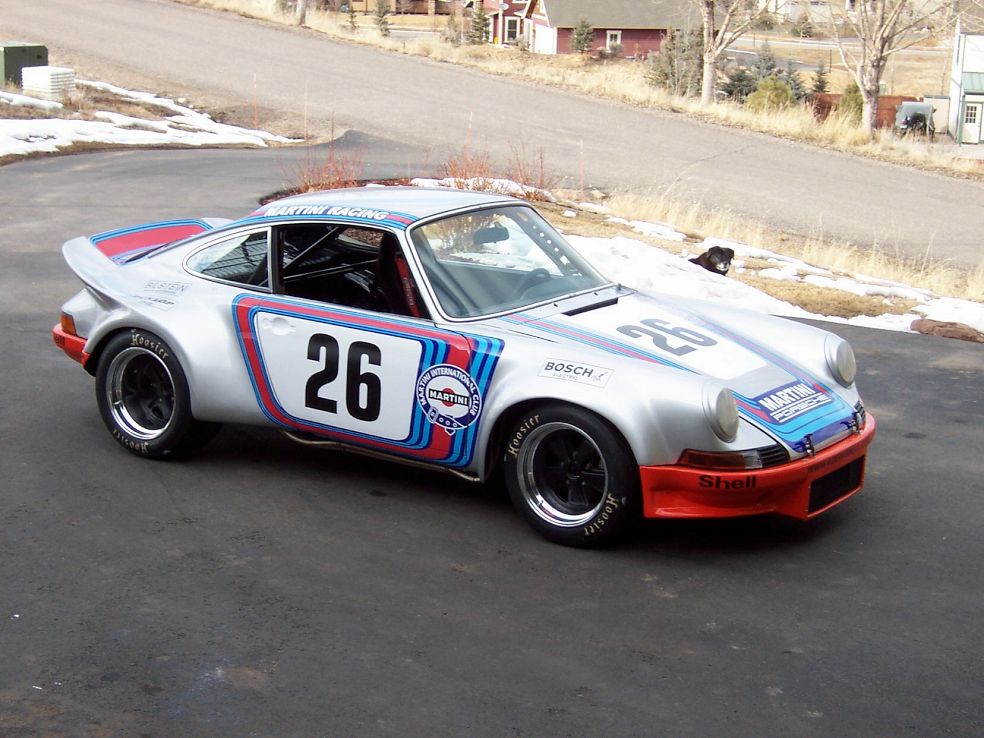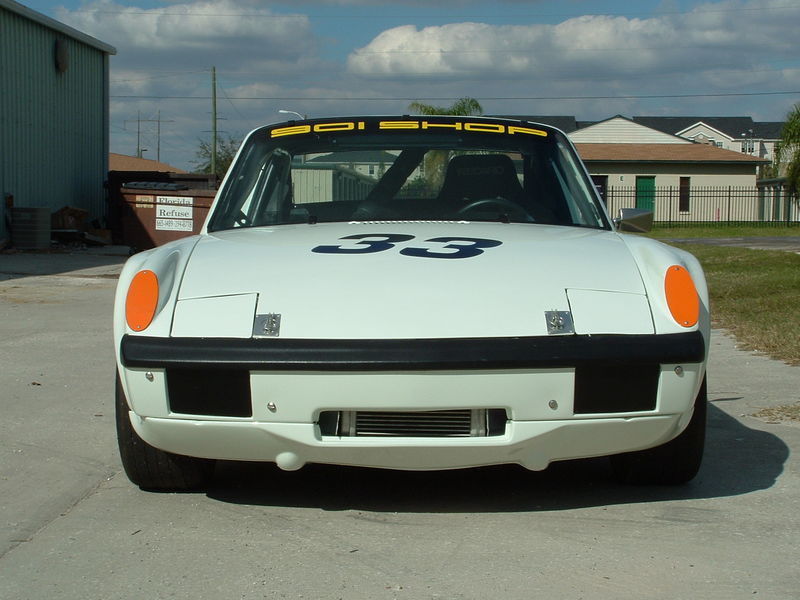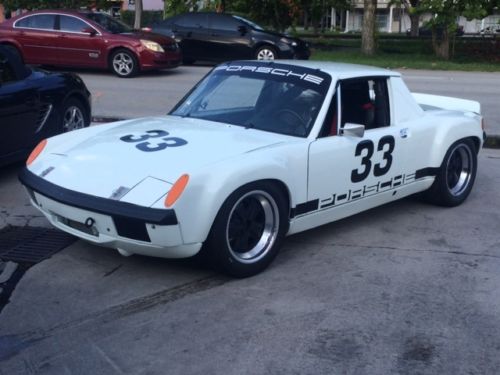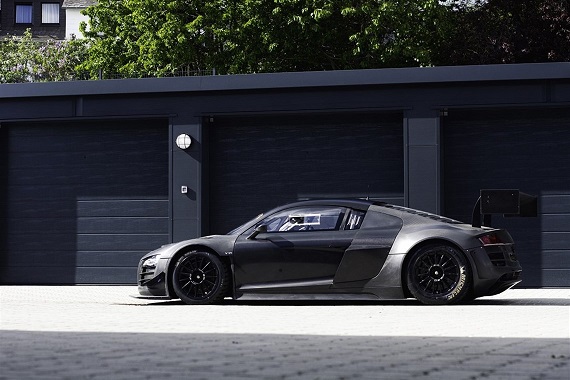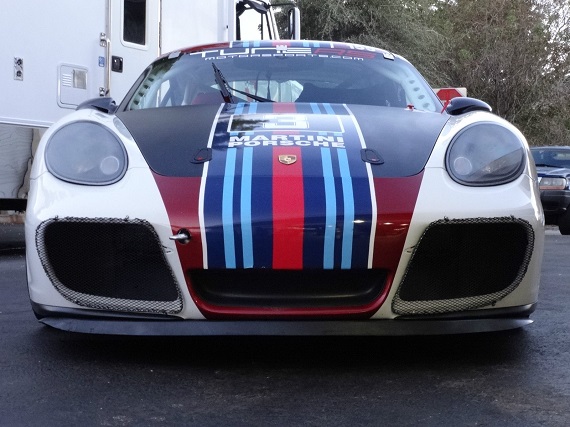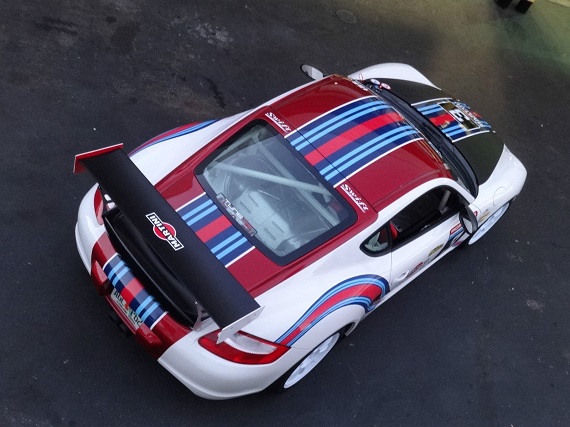From one iconic Porsche livery in the Martini Racing colors, we move on to another equally if not more recognizable color scheme for Stuttgart; the John Wyer run Gulf Racing with the unmistakable blue and orange combination. Yet, this time we’re not looking at a Porsche, but Volkswagen GTi. Perhaps the GTi doesn’t quite have the racing repertoire of the 911 more often associated with Gulf, but these potent pocket rockets have been popular race platforms since their inception. The original GTi makes an excellent and affordable race chassis, and while the newest models are an amazing 32 years old now they’re still hitting the track and winning.
Tag: race car
On the verge of three years ago I took a look at a neat 911 Carrera RSR tribute. Rather than take the typical path of copying the IROC cars, the builder of this particular car chose the “Mary Stuart” Martini Racing example to clone. The car was named because the wrap around rear duck-tail spoiler reminded some of the high collars which were the vogue during Mary, Queen of Scots’ reign. With its unique tail offsetting those iconic colors, it is certainly an attention getter. However, the seller has now attempted to shift this car more or less continually since 2013 – first at an asking price of $165,000, then dropping in 2014 to $135,000, and now back up to $165,000 presumably to try to capitalize on the current 911 market. It is without a doubt a neat build and unique execution, so even though it’s unlikely to trade this time around again I thought it was worth another look:
The below post originally appeared on our site September 9, 2013:
I think I’ve made it pretty clear that I think Martini Racing colors are just awesome. Some people insist everything looks better in “Gulf Blue”, but for me, it’s those Martini stripes that made some of the best looking race cars (and in a very few cases, even improved road cars). Case in point is today’s example; perhaps one of the strangest downforce attempts of the 1970s on a Porsche – the Mary Stuart tailed Martini Racing RSR. While a neat design in some ways, it certainly looks odd from other angles. Today’s 1971 911 is a recreation of the original, but you can’t deny that it looks fantastic in the proper Martini Racing colors of the 1973 RSR:
CLICK FOR DETAILS: 1971 911 RSR Martini Racing replica on Ebay
Comments closedAs I looked across the lawn at the Larz Anderson Auto Museum’s German Car Day between a Porsche Cayman GT4 and the Porsche 914s that lined the row behind it, I couldn’t help but feel that the diminutive design doesn’t get enough credit from enthusiasts. Indeed the aura of the 911 is so thoroughly encompassing it overshadows nearly every other Porsche model conceived and constructed, but especially this seems to be true of the 1970s. During that time Porsche launched groundbreaking models like the 924 and 928; generally, both very unappreciated compared to the air-cooled siblings. But the 914 seems nearly forgotten despite its similar engine behind the driver and atmospheric cooling setup. Why? Well, it’s not the prettiest Porsche design, it’s true – but presented properly it is still quite neat. The neatest of the bunch are probably the original, fat-flared 914-6 GT models. Ready to blow your mind? Fresh off their somewhat surprising and unlikely victory at Le Mans yesterday, I thought it would be nice to take a look at a 914-6 GT replica, because 46 years ago Porsche themselves entered such a car at the 24 hour endurance race. Now, 1970 is probably a lot more memorable for Porsche because it was the famous red Salzburg 917K Attwood/Hermann that took overall victory. You might remember the 1970 race for being the basis of the Steve McQueen movie that was appropriately named, too. But what was perhaps the most amazing thing about that race was who finished 5th overall. Following the 917K and the 917LH along with two Ferrari 512Ss was that Porsche 914-6 GT, some three laps ahead of a 911S. How’s that for something to put on your resume?
CLICK FOR DETAILS: 1973 Porsche 914-6 on eBay
1 CommentIf you were a gentleman racer over the best part of the past decade and a half, there was only one natural choice for your steed; the Porsche 911 GT3 Cup car was, and still is, the most popular choice for factory supported full race cars to buy brand new. But we can thank the success of the Cup formula for an entirely new lineup of racers, from the Lamborghini Super Trofeo to the track-oriented Laguna Seca Mustangs. In the FIA mandated GT3 field, the advent of the Pro/Am designations have similarly diversified the field from the standard Porsches to new entrants, from the seemingly outrageous Bentley Continental GT3 to the Aston Martin Vantage GT3. But while those names may seem like newcomers on the international circuits, the reality is that both the heritage of Bentley and Aston Martin lay exactly with those gentleman racers. No, the real newcomer to the block is the Audi R8; a name steeped in Le Mans history but a chassis built for the street, the GT3 effort resulted in the popular and sonorous R8 LMS Ultra, as Audi shifted its focus from showcasing quattro all-wheel drive in racing to the lightweight technology incorporated into the new mid-engined racer:
CLICK FOR DETAILS: 2012 Audi R8 LMS Ultra on Race Cars Direct
2 CommentsYesterday, our editor Paul sent me a quick message with a link enclosed – “Enjoy a late birthday present!” he said. The link was to the movie Le Mans, the 1971 classic staring Steve McQueen piloting the equally iconic Gulf-liveried John Wyer run Porsche 917Ks. But while that combination would be emblazoned in history as the defacto color for the Porsche 917, to me the more memorable combination was the car that actually won the 1971 Le Mans 24 Hours. That was the magnesium-framed number 22; a pale white car that debuted an equally iconic combination for me as it was sponsored by Martini Racing. Later in the 1970s, the livery would become more famous as the multiple winners with both 935 and 936 chassis, but few remember that the connection went back into the era of the light-blue Gulf cars. The Martini livery is still popular today, carried on by a proud tradition into Formula 1 as well as being recreated by amateur enthusiasts in the Porsche Interseries, a Cayman-only race program that notably offered drivers to run famous Porsche colors. Very few can afford the opportunity to even see 917s in action – never mind own one. But a Cayman S racer? While not cheap, they’re considerably more affordable than you’d expect:

